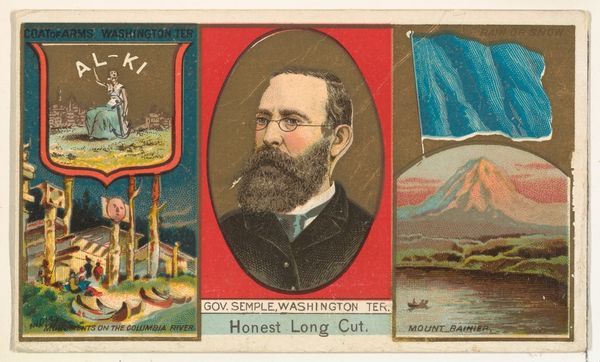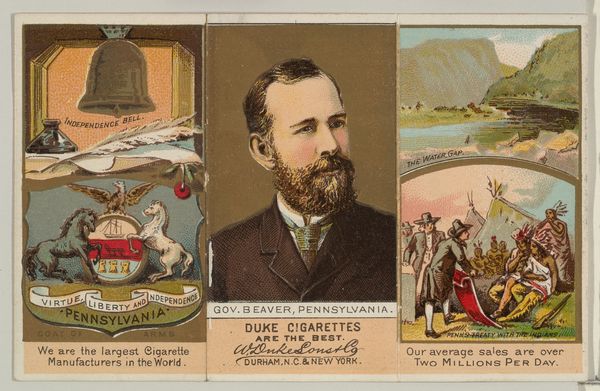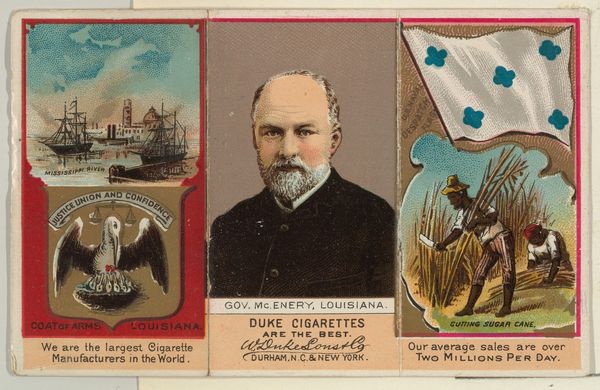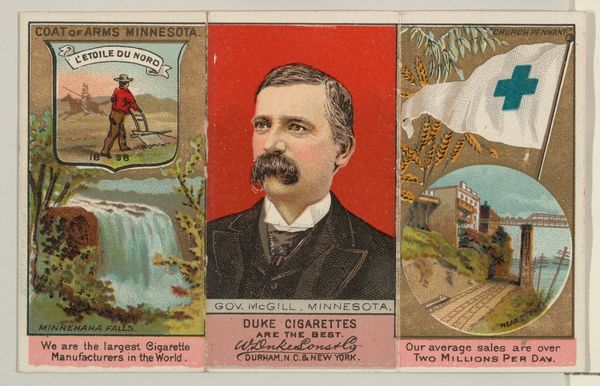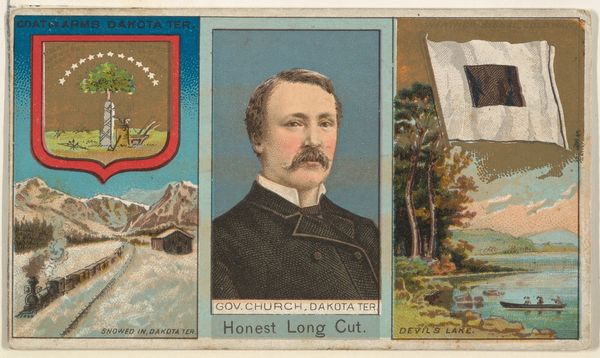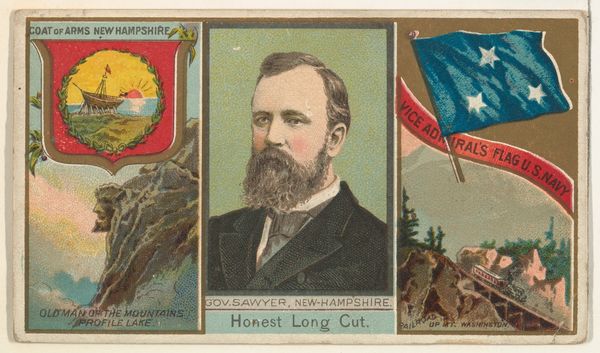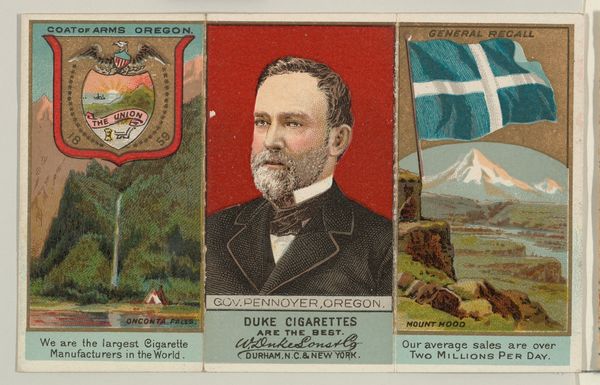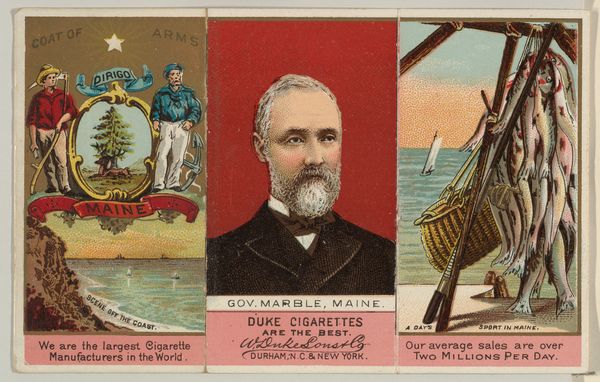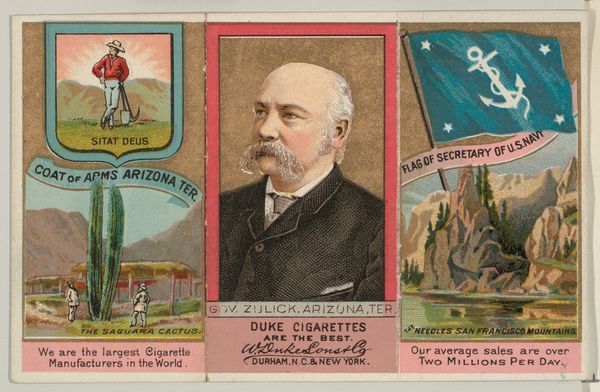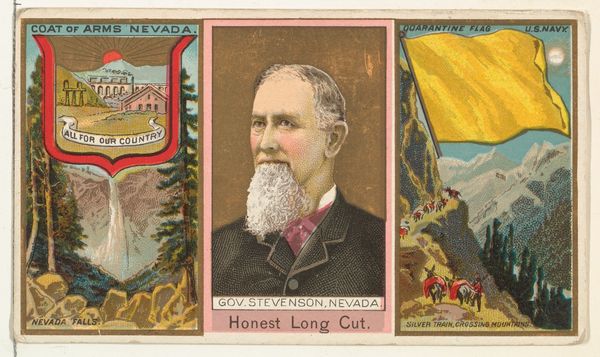
Governor Semple, Washington Territory, from "Governors, Arms, Etc." series (N133-2), issued by Duke Sons & Co. 1885 - 1892
0:00
0:00
drawing, print, watercolor
#
portrait
#
drawing
# print
#
caricature
#
landscape
#
caricature
#
watercolor
#
cityscape
#
genre-painting
Dimensions: Sheet (unfolded): 2 3/4 × 4 5/16 in. (7 × 11 cm) Sheet (folded): 2 3/4 × 1 3/8 in. (7 × 3.5 cm)
Copyright: Public Domain
Editor: Here we have a promotional print from between 1885 and 1892, titled "Governor Semple, Washington Territory, from 'Governors, Arms, Etc.' series," created by W. Duke, Sons & Co. It's a little triptych featuring a portrait, a cityscape, and a landscape all on one card. I'm curious – it's ostensibly a portrait, but it seems to be equally focused on branding. What jumps out at you? Curator: Exactly! Think about the means of production here. This isn't fine art meant for a gallery, it's a mass-produced commercial item, a cigarette card. The portrait itself is almost secondary to its function: advertising. Consider the materials – inexpensive card stock, likely printed using a lithographic process to allow for widespread distribution. This challenges the traditional art hierarchy, doesn't it? What kind of labor was involved in the design, printing, and distribution? Editor: That's fascinating. So it’s not really about the artistry of the portrait itself, but about the process of making and distributing these cards? It kind of shifts the focus to the cultural context of advertising and consumerism at the time. Curator: Precisely. The “art” here lies in the clever conflation of political authority – represented by the Governor – and the brand of Duke Cigarettes. The very inclusion of “Mount Rainier” reinforces the consumption of place with brand loyalty. Also notice the mention of "Two Millions Per Day", referring to the sales! It shows an emphasis on industrial output and profit above any concern of craft. Editor: I hadn’t thought about the link between place and consumerism! Seeing this as less about individual skill and more about mass production gives a whole new meaning to the image. Curator: Right! We're moving away from individual artistic genius and into the realm of industrial design, marketing, and the social impact of mass media. That is why this "trifle" is actually quite complex in terms of social meaning. Editor: I see, by examining its context as a product, we reveal a lot about society and consumer culture in the late 19th century! It's fascinating how much a small cigarette card can tell us. Curator: Precisely, paying attention to those details of its material existence makes this artwork insightful.
Comments
No comments
Be the first to comment and join the conversation on the ultimate creative platform.
